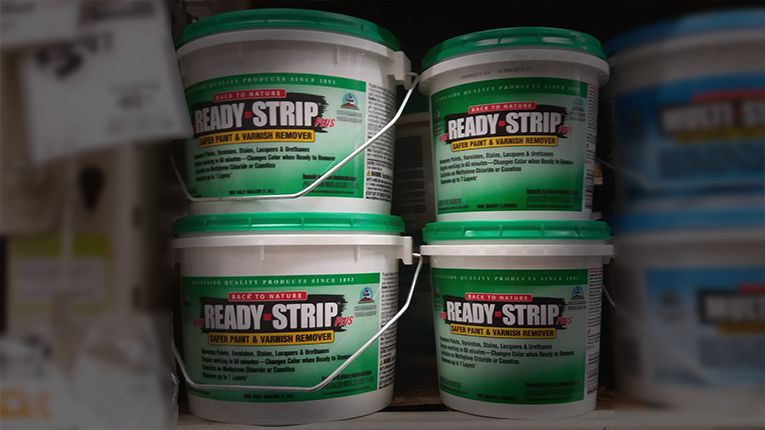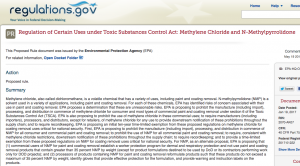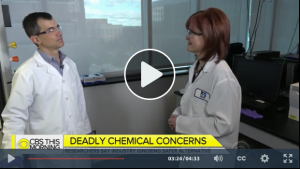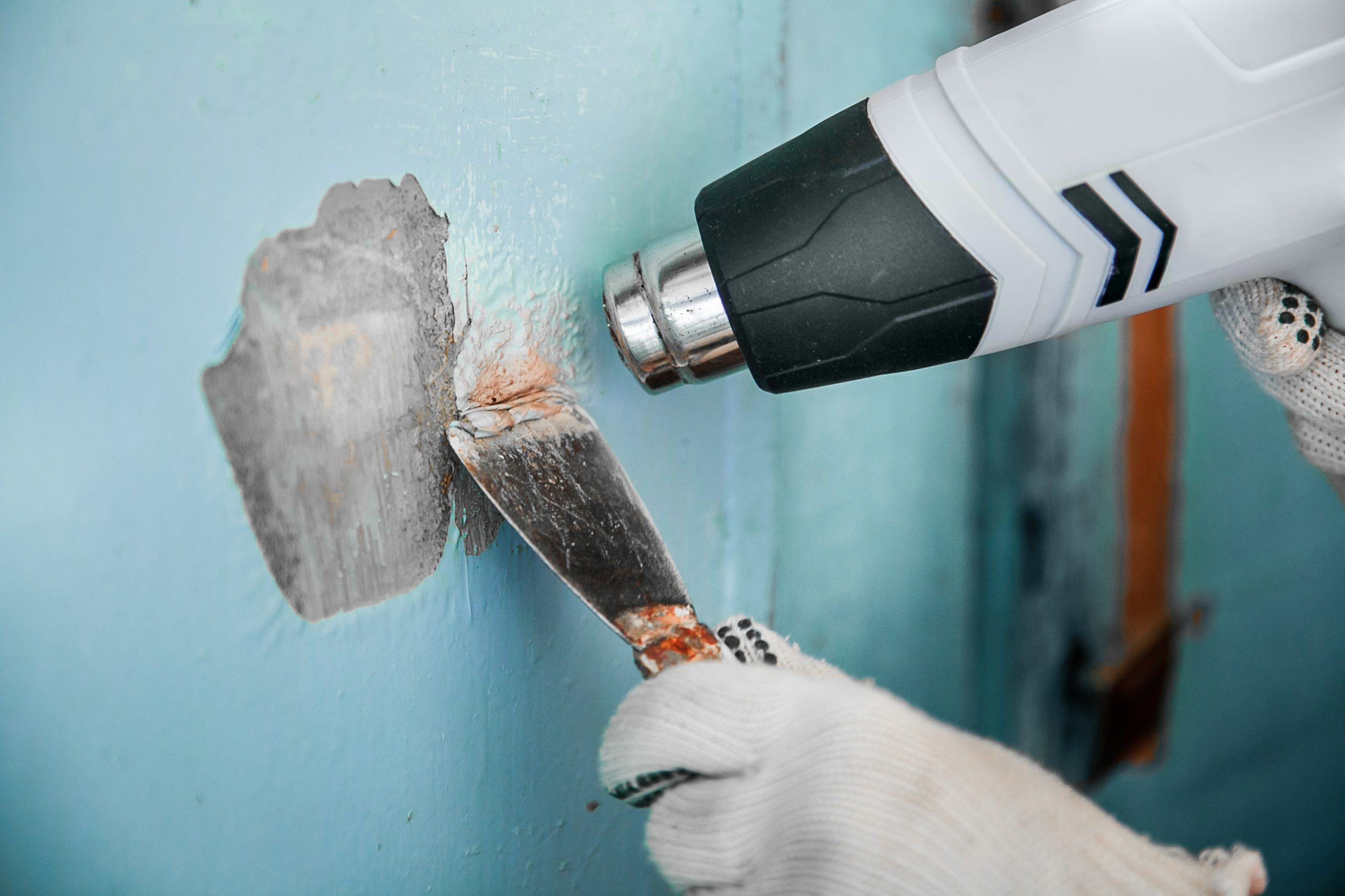NMP (N-Methylpyrrolidone)

N-Methylpyrrolidone, also known as NMP or 1-methyl-2-pyrrolidone, is a solvent used in a range of products. The average consumer is most likely to encounter it in paint strippers, even though safer alternatives exist. NMP has been closely linked to developmental impacts including miscarriages.
The U.S. Environmental Protection Agency (EPA) describes NMP as a developmental toxicant. In 2017, EPA proposed to ban this chemical’s use in paint stripping but then shelved the proposal under pressure from industry and in 2021 officially withdrew the proposal. We’re calling on retailers to take action and stop selling paint strippers containing NMP. In the meantime, if you need to remove paint or a coating, make sure to avoid NMP and other toxic chemicals like methylene chloride.
What products contain NMP?
- Paint Strippers: NMP is a key ingredient in a variety of paint and coating removers sold in the U.S.
- Paints and other coatings: This chemical is also used in a range of coating products sold by popular retailers. For a comprehensive list of coatings containing NMP, click here to view the list developed by EPA in February 2017 (see pages 8-10).
- Other Products: Some adhesives, cleaners, dyes, inks, and pesticides also contain NMP. Review EPA’s comprehensive list here.
How am I exposed to this chemical?
If you are a consumer or worker who uses products with NMP, you may be exposed through skin contact or by inhaling the vapors.
- You are most likely to be exposed to NMP while using paint and coating removers containing the chemical.
- Contact with skin may be direct if the product touches your hands, or indirect, if NMP vapor is absorbed through any uncovered skin (e.g. neck or head).
- Keep in mind: According to EPA, respiratory protection and specialized gloves may not be enough to protect people from exposure where levels of NMP are high.
Y0u may also be exposed if you live in a home where water-based coatings with NMP were recently applied.
- This type of coating may be applied to wood flooring in homes. In the week or two after the application, residents may be exposed to elevated levels of NMP vapor from the coating, according to a recent study.
EPA estimated in 2017 that each year, 30,300 workers and 732,000 consumers are exposed to NMP in paint and coating removers.
What are the possible health impacts?
- Developmental toxicity / Fetal death (such as miscarriage or stillbirth) is a key risk from just one day of exposure to NMP in paint strippers. According to estimates by EPA, each year 11,300 pregnant consumers and 160 pregnant workers face an increased risk of fetal death from exposure to NMP.
- Fetal death can result in significant emotional impacts for the woman and her partner and adversely impact future pregnancies and children.
- EPA discussed a report of a pregnant worker’s fetus dying at 31 weeks in utero: She “was exposed throughout pregnancy” to unknown levels of NMP but she also worked with acetone and methanol. In week 16 of the pregnancy, she became sick with a headache, nausea, and vomiting for four days after cleaning up a spill of NMP using gloves that dissolved in the chemical.
- Skin, eye, and possible respiratory irritation
Long-term exposures (“chronic”) include:
- Developmental toxicity / decreased fetal weight may result when female workers who may become pregnant are repeatedly exposed to NMP in paint and coating removal, even if the exposure is only for five days. EPA states that a subset of the estimated 500 pregnant workers annually using NMP for paint and coating removal is at an increased risk for decreased fetal weight.
- Decreased fetal weight can lead to low birth weight. This in turn may contribute to problems right at birth, including difficulties gaining weight, breathing problems, and neurologic and gastrointestinal problems. Because of a low birth weight, the child may not grow quickly and may face cognitive, behavioral, and neurological issues. Once adults, these individuals are more likely to have poor health and suffer from metabolic syndrome, heart disease, and diabetes.
- Body weight reductions
- Kidney toxicity
- Liver toxicity
- Reproductive toxicity
- Neurotoxicity
What are governments and businesses doing about this?
- U.S. Environmental Protection Agency (EPA) proposed a rule, and withdrew it four years later.
 The reforms made to the Toxic Substances Control Act in June 2016 greatly strengthened EPA’s authority over toxic chemicals. To address the serious risks posed by NMP in paint strippers, EPA proposed a rule to regulate this use in January 2017. However, in late 2017, under pressure from the chemical industry, the Trump administration signaled its intent to indefinitely delay the rule. In early 2021, this administration officially withdrew the rule.
The reforms made to the Toxic Substances Control Act in June 2016 greatly strengthened EPA’s authority over toxic chemicals. To address the serious risks posed by NMP in paint strippers, EPA proposed a rule to regulate this use in January 2017. However, in late 2017, under pressure from the chemical industry, the Trump administration signaled its intent to indefinitely delay the rule. In early 2021, this administration officially withdrew the rule. - While EPA delayed in taking action, top retailers agreed to phase out their sale of paint strippers containing NMP. For example, Lowe’s and The Home Depot committed to stop selling paint strippers with NMP in all of their stores (globally) by the end of 2018. Walmart agreed to phase out paint strippers with NMP online and in most stores by February 2019. Sherwin-Williams has confirmed that it does not carry products with NMP and will continue to keep these paint strippers off its shelves.
- The European Union has added NMP to its restricted substance list. NMP was previously restricted in consumer products including paint strippers several years ago with a concentration limit of 0.3% due to the chemical’s classification as toxic to reproduction. To address workplace exposures, in 2018, the European Chemicals Agency issued a regulation restricting the manufacture, use, and sale of all products, including paint strippers, containing NMP in concentrations greater than 0.3% unless certain conditions are met. The restriction went into effect May 9, 2020. The European Chemicals Agency classifies NMP as a “Substance of Very High Concern” because of its toxicity to reproduction based on developmental toxicity. This chemical is also on REACH’s candidate list for authorization, meaning that it could be banned or companies would be required to submit an application to continue using, begin using, or sell this chemical (note this doesn’t apply to imported products).
What can I do?
Some of the top retail chains in the U.S. are still selling paint strippers with NMP, even though there are safer alternatives. Stay tuned for actions you can take to call on these companies to stop selling these toxic products.
How can I avoid exposure to NMP?
Know the ingredients in your paint stripper or other products listed above
- If you or your home contractor needs to remove paint or a coating or apply a coating, make sure the product used does not contain NMP. Even if it is labeled as “Safe for indoor use” or “No harsh fumes” – check the ingredients.
- According to EPA, respiratory protection and specialized gloves may not be enough to protect people from being exposed where levels of NMP are high. Even with lower levels, it may be difficult to find gloves that are effective against the specific formulation of the product.
- Another toxic component of paint strippers is methylene chloride. It’s also important to avoid products containing this chemical.
Look for safer products
- Click here to view a list of safer paint and varnish strippers and graffiti, stain, spill, and all-purpose removers sold by major U.S. retailers (updated December 2019).
- New safer alternatives are under development: watch this video to find out more.

- For more detailed information on safer alternatives, see reports by Clean Production Action and the Toxics Use Reduction Institute (TURI).
Use another method without chemicals – although it may carry different risks

- It’s possible to strip bathtubs by sanding.
- Other paint and coating removal methods include thermal removal, hydroblasting, abrasive blasting, laser removal, and infrared removal.
